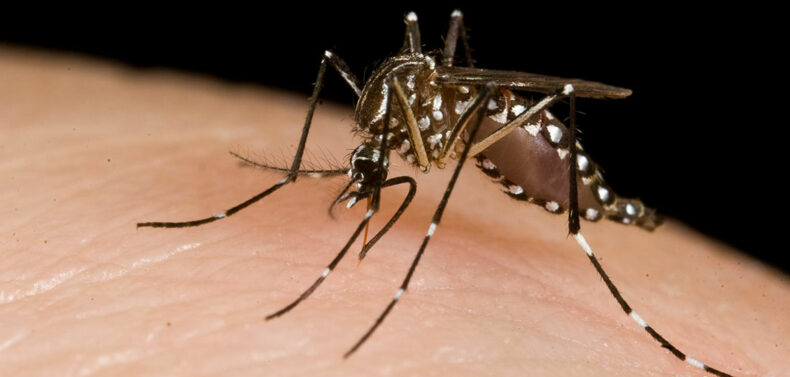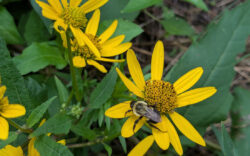Georgia summers—the times it doesn’t feel like living inside a post-workout armpit—can come with a hive of biting, buzzing insects. Here are some ways to keep the bugs out of your hair and make your time outdoors more enjoyable.
Exclude the Bugs: From covered porches to shade tents with bug netting, having a physical barrier between you and the nasties can work wonders. Covered porches are more of an investment, but renters with even a small yard can purchase a shade tent with bug netting for $100–200. Tents should be secured or dismantled for high winds and heavy rainstorms to prevent damage. A few friends recently purchased a tent with netting, and it’s made their small backyard a sweet afternoon hangout spot. If you’re doing more than sitting in one place, opt for long-sleeved, light-colored clothing and hair tucked into light-colored hats as a way to deter pests. I garden in a collection of thrifted tie-dyed long-sleeved cotton shirts originally intended as light-weight beach wear. The shirts dissuade most mosquitoes and horseflies without additional measures.
Insect-away Incense: Thermacell is a real game changer, especially if you’re grilling or enjoying your uncovered patio or porch. The device runs on batteries (some are rechargeable) or butane to burn a small pad of various chemicals that repel most biting, flying bugs within 10–20 feet. Though it works, the unit takes time to heat up and build up a mosquito-free bubble around it. It’s best to turn it on, wait 15 minutes and then go outside. A stiff breeze can cut the effectiveness. The Thermacell’s slow burn does emit a scent, but it’s mildly noticeable and not pervasive like many bug sprays.
Ignore Marketing: I fell for the “Keep Mosquitoes Away!” printed labels on the citronella and lemongrass plants a few years ago. Sitting in a grove of citronella won’t stop hungry mosquitoes. Do these plants help deter some percentage of pests? Maybe, but not enough. I like growing lemongrass. It’s fun to cook with, looks great, handles a drought and smells amazing anytime I brush past it. I wouldn’t grow it based solely on if it deterred mosquitoes: It doesn’t.
Drink Less: Several studies have shown a correlation between the number of alcoholic drinks a person imbibes and an uptick in the number of mosquito bites. As someone who loves a cold beer on a steamy day, this isn’t a condemnation—just a note of caution to avoid becoming itchy and drunk on top of hot. Remember to chug some water as well, and use another bug deterrent.
Bug Spray: There are three big active-ingredient categories for spraying your body: essential oils, DEET and picaridin. Essential oil-based sprays usually have some mixture of lemongrass and eucalyptus oils. The versions I’ve used needed additional applications for all-day protection from insects. I didn’t mind the menthol-type smell, but I can see how it could be offensive to some. The chemical DEET is the active ingredient in most bug sprays. Though effective, DEET smells terrible, and feels sticky and greasy. I feel self-shellacked after layering sunscreen, a DEET-based spray and an hour’s worth of sweat. DEET, while approved by the Environmental Protection Agency, continues to undergo various human and environmental toxicity studies because of ongoing safety concerns. I get it. It smells like poison and can melt some forms of plastic, though it’s effective at preventing bites from mosquitoes, ticks and flies. Use as directed and wash off when you’re back inside. Consumer Reports suggests a 20–30% DEET concentration hits the balance of warding off pests without superfluous chemicals. The newest entry to deflect insects is picaridin, a chemical developed in the 1980s and based on a naturally occurring chemical in pepper plants. I haven’t had a chance to try a picaridin-based repellent yet, but I’m eager to do so. There’s a wide range of picaridin-based products, some that seem to work better than others. Various consumer testing studies recommend a spray with a 20% concentration of picaridin. Online reviews cite products feeling lighter and smelling better than similar DEET-based offerings. Warning: Though EPA approved, some people develop a rash after using picaridin products. Spray a small patch on a leg or foot before spritzing your entire body.
Like what you just read? Support Flagpole by making a donation today. Every dollar you give helps fund our ongoing mission to provide Athens with quality, independent journalism.









